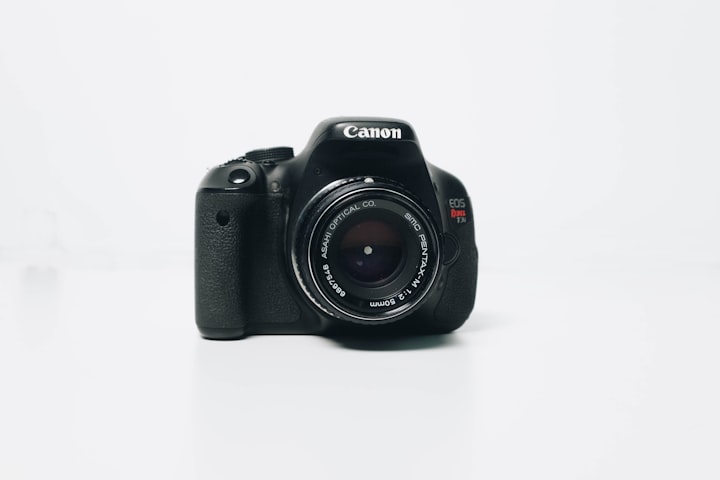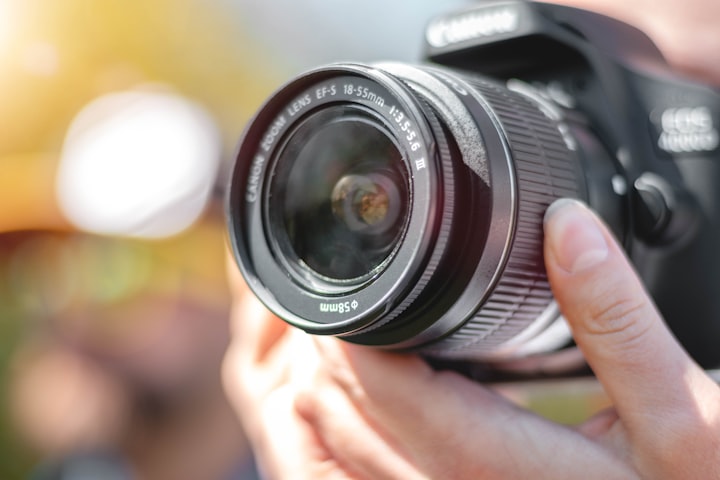
A camera is an optical instrument used to capture and store images and videos, either digitally via an electronic image sensor, or chemically via a light-sensitive material such as photographic film. As a pivotal technology in the fields of photography and videography, cameras have played a significant role in the progression of visual arts, media, entertainment, surveillance, and scientific research. The invention of the camera dates back to the 19th century and has since evolved with advancements in technology, leading to a vast array of types and models in the 21st century.
Cameras function through a combination of various mechanical components and principles. These include exposure control, which regulates the amount of light reaching the sensor or film; the lens, which focuses the light; the viewfinder, which allows the user to preview the scene; and the film or sensor, which captures the image.
Several types of cameras exist, each suited to specific uses and offering unique capabilities. Single-lens reflex (SLR) cameras provide real-time, exact imaging through the lens. Large-format and medium-format cameras offer higher image resolution and are often used in professional and artistic photography. Compact cameras, known for their portability and simplicity, are popular in consumer photography. Rangefinder cameras, with separate viewing and imaging systems, were historically widely used in photojournalism. Motion picture cameras are specialized for filming cinematic content, while digital cameras, which became prevalent in the late 20th and early 21st century, use electronic sensors to capture and store images.
The rapid development of smartphone camera technology in the 21st century has blurred the lines between dedicated cameras and multifunctional devices, profoundly influencing how society creates, shares, and consumes visual content.
Camera, in photography, device for recording an image of an object on a light-sensitive surface; it is essentially a light-tight box with an aperture to admit light focused onto a sensitized film or plate.
A brief treatment of cameras follows. For full treatment, see photography, technology of: Cameras and lenses. See also digital camera.
The iPod nano, introduced by Apple CEO Steve Jobs in San Francisco, May 2007. A revolutionary full-featured iPod that holds 1,000 songs and is thinner than a standard #2 pencil. MP3 player, music player, digital music
Though there are many types of cameras, all include five indispensable components: (1) the camera box, which holds and protects the sensitive film from all light except that entering through the lens; (2) film, on which the image is recorded, a light-sensitive strip usually wound on a spool, either manually or automatically, as successive pictures are taken; (3) the light control, consisting of an aperture or diaphragm and a shutter, both often adjustable; (4) the lens, which focuses the light rays from the subject onto the film, creating the image, and which is usually adjustable by moving forward or back, changing the focus; and (5) the viewing system, which may be separate from the lens system (usually above it) or may operate through it by means of a mirror.
The earliest camera was the camera obscura, which was adapted to making a permanent image by Joseph Nicéphore Niepce and Louis-Jacques-Mandé Daguerre of France in the 1820s and 1830s. Many improvements followed in the 19th century, notably flexible film, developed and printed outside the camera. In the 20th century a variety of cameras was developed for many different purposes, including aerial photography, document copying, and scientific research.
The following are the most essential internal and external parts of a camera for the actual process of creating photos.
Camera Body.
Image sensor and processing engine.
Autofocus system.
Control dials and buttons.
Viewfinder and LCD screen.
Memory card slot and connectivity ports.
External Flash and Hot Shoe.
Tripod Mount.
Function of camera body?
The camera body is a light proof box. The controls for exposure settings and other effects are located on the camera body. (cameras with Touch LCD Screens may also have many controls available right on the LCD screen) The camera shutter and the image sensor are located inside the camera body.
What are the three major parts of the camera?
However, the main parts of a camera are the camera body, then the camera lens and finally the film.What are the 4 elements of a camera?
The 4 Basic Elements of Photography
To take a great photo, you need to understand the four essential elements of photography: composition, aperture, shutter speed, and ISO. Each of these elements affects your photo differently, and understanding how they work together is the key to taking great pictures.
About the Creator
Olaoluwa
Ola was born 24th May 2011
He is a Story teller, Reasearcher, Poem Writer and lot more
Enjoyed the story? Support the Creator.
Subscribe for free to receive all their stories in your feed. You could also pledge your support or give them a one-off tip, letting them know you appreciate their work.






Comments
There are no comments for this story
Be the first to respond and start the conversation.